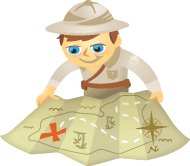 Interested in building a dashboard to track key social media metrics?
Interested in building a dashboard to track key social media metrics?
Wondering which data and metrics to include?
With a little strategic planning on the front end, you can select and track meaningful metrics that relate to your business goals.
In this article, you'll discover which metrics to track and how to organize them into a simple dashboard.

#1: Define Social Media Marketing's Expected Role in Relation to Your Business Goals
If you manage social media for your business, it's likely you aren't the person defining overall business and marketing goals. However, if you run a small business, you may oversee the whole kit-and-caboodle.
In either case, look first at your overall business goals. Tracking those goals is the best way to ensure you'll have buy-in for your efforts, and stay on track and accountable.
For instance, suppose you're a B2B and your objective is to introduce a new product line with sales of $500,000 by the end of the year. Knowing this business objective allows you to create measurable goals.
With knowledge of your existing product lines and sales cycle, you perform some calculations. Your new product is priced at $500, so you'll need to sell 1,000 units ($500,000/$500) to meet your sales goal. Only one lead in five provided to sales closes, so marketing will need to provide 5,000 new leads to the sales department.
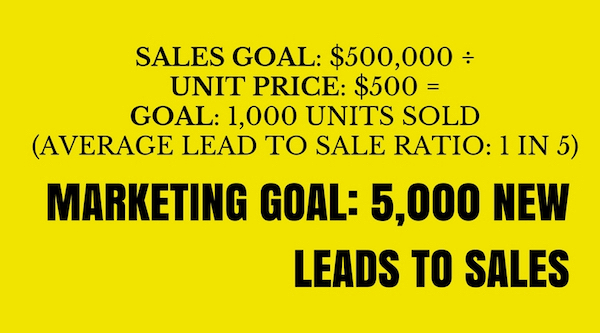
Social media will only be a part of this marketing strategy, but if you know your audience, you can set measurable goals outlining how social media will contribute. For example, given your audience size, budget, and engagement levels, you know social media will be able to contribute, at most, 500 of those 5,000 leads. Now you have your target.
Of course, marketing goals are often a bit murkier than the above example. If there isn't a tight link between sales and marketing and a way to measure sales or leads, your marketing goals may be something like “raise awareness.” In that case, you'd need to set goals for fan growth and engagement.
#2: Outline the Social Tactics That Will Support Your Marketing Goals
Once you've defined your primary social media goals, you can assign tactics that help you deliver on those goals. Continuing with the lead generation example above, look for tactics to drive traffic to the pages that best convert users into leads. This might include a download page for a white paper or ebook, a popular blog post, or a page with a cost calculator and a big Contact Us button.
As you outline the social media tactics you'll use to drive the right traffic to those pages, start thinking about what you'll measure.
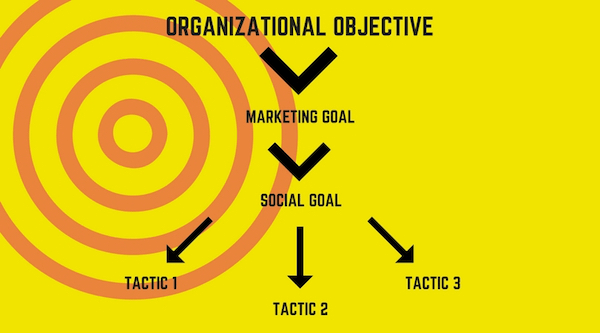
Of course, there's quite a bit to ensuring you're driving the right traffic to your site. When you put together your plan, include specific social media channels and outline the tactics for each channel.
Get World-Class Marketing Training — All Year Long!
Are you facing doubt, uncertainty, or overwhelm? The Social Media Marketing Society can help.
Each month, you’ll receive training from trusted marketing experts, covering everything from AI to organic social marketing. When you join, you’ll also get immediate access to:
- A library of 100+ marketing trainings
- A community of like-minded marketers
- Monthly online community meetups
- Relevant news and trends updates
For instance, your plan may include the following tactics for Facebook:
- Using data collected via the Facebook pixel on your website, create a Facebook lookalike audience and serve this audience paid ads to drive traffic to high-converting landing page A. Use testing to optimize your call to action.
- Share content from your blog to the Facebook news feed, boosting posts that include content that links to landing page A.
- Conduct a social media test and learn to optimize content types for engagement.
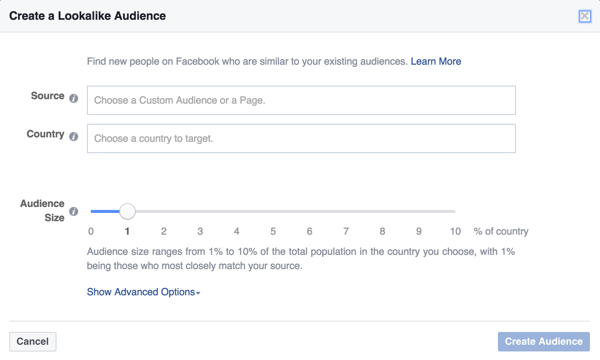
#3: Measure Metrics That Inform Your Decision-Making
This is an exercise in deciding what really matters. The reality is that you can track endless amounts of data. Figuring out what data to focus on is more important than collecting reams of data. Look at data you can learn from and that tells you a story about how to do better in your future efforts.
In the lead generation example above, the most important metric to track is the number of conversions on the page that come from social. But you'll need to know more than that.
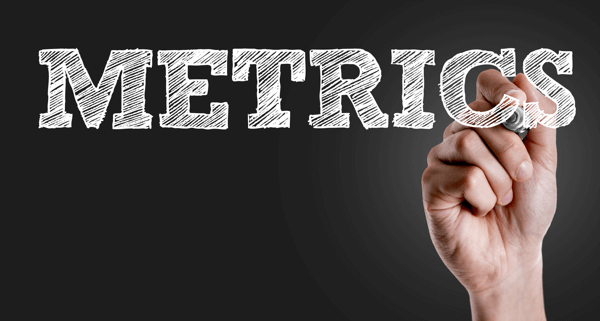
If you track impressions, clicks, users on the landing page, and conversions, you'll start to see which parts of the process are working and which aren't. Here's what you might do with that information:
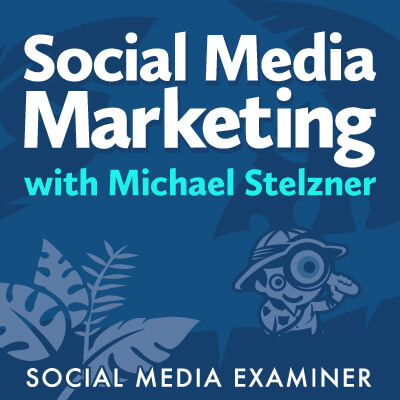
Discover Proven Marketing Strategies and Tips
Want to go even deeper with your marketing? Check out the Social Media Marketing Podcast! Publishing weekly since 2012, the Social Media Marketing Podcast helps you navigate the constantly changing marketing jungle, with expert interviews from marketing pros.
But don’t let the name fool you. This show is about a lot more than just social media marketing. With over 600 episodes and millions of downloads each year, this show has been a trusted source for marketers for well over a decade.
- If your impressions are lower than you expect, think of ways to boost them.
- If your impressions are good but no one's clicking, work on optimizing your CTA.
- If people get to the landing page but don't convert, focus on optimizing your landing page or work harder to ensure the landing page delivers what's promised in your social post.
- If you're converting from paid search but not paid social, you may be promising the wrong thing in your social ads.
#4: Create a Simple Tracking Dashboard
A “dashboard” is a place where you can see the progress of your marketing activities. It doesn't have to be a highly complex, overly stylized document to be useful. It can be as simple as an Excel or Google spreadsheet that tracks weekly, monthly, and quarterly metrics. What's most important is that it will highlight points of interest, and outline insights and recommendations for action.
There are also numerous dashboard tools you can use to make beautiful dashboards with visuals to illustrate your data points. Many social media management tools include built-in social dashboards and reports, but they generally can't include internal data and website analytics. The more robust tools can also be expensive.
One free tool you may want to try is Google Data Studio. It lets you connect to a number of data sources and create customized dashboards. You can connect directly to Google Analytics, Google Sheets, AdWords, MySQL, Search Console, and more.
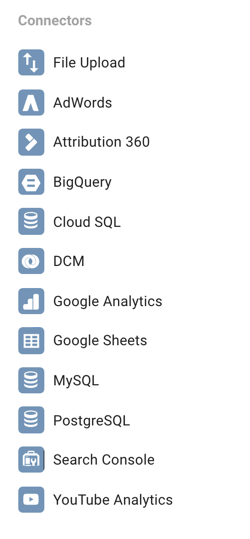
Although there isn't yet a direct connection between, say, Facebook analytics and Data Studio, there are workarounds that let you upload social media data, provided you can export it from social networks or a monitoring tool to a CSV file.

Track KPIs and Action Items
Here's an example of a simple tracking dashboard that an internal marketing team may use to stay on track.

If you want to create a simple internal dashboard like this one, start with three sections. In the first section, track where your business is today in terms of domain authority, website sessions, social media followers on different channels, and engagement rates on several platforms.
In the second section, include KPI targets for each metric by month. At the end of each month, use green to denote areas where you're on track and add red to areas where you're falling behind. This color-coding lets you see at a glance where your strategy is working and where it needs improvement.

Formulate your KPIs based on how you think your business will progress toward your longer-term goals each month. Defining the right KPIs takes some practice. It's a matter of looking at your long-term goals, understanding what you need to do to get there, and layering in knowledge of your own performance history, industry benchmarks, and your audience, budget, and potential hiccups.
In the third section, use text to call out insights and lay out recommendations and action items.
Keep Your Dashboard Updated
The goal is to create a dashboard that's useful and not simply a chore. The process that works for you will depend on your staff, what you're measuring, the length of your campaigns, and more.
One simple management method is to update numbers in your spreadsheet weekly so you can see how you're progressing against the monthly KPIs. Then “top off” your data on the last day of the month. At that point, highlight your KPIs and make sure anyone on your team with an analytical mind gets a chance to dig into the data for insights.
Use these insights to craft recommendations for forward momentum at least once a month and send those recommendations to the larger team. Check in quarterly to see whether those recommendations were implemented and if so, how they affected the performance of your campaigns.
Conclusion
With a little thought up front, you can create a social media measurement plan that focuses on what matters most to your business. At the beginning of the planning process, carefully consider the variables. Once you've done that, it's easy to create a simple dashboard to track your success. The best part? This process naturally leads to constant improvement of your execution and strategy.
What do you think? How do you define your social media goals and tactics? What metrics do you track? Please share your thoughts in the comments below.

Attention Agency Owners, Brand Marketers, and Consultants

Introducing the Marketing Agency Show–our newest podcast designed to explore the struggles of agency marketers.
Join show host and agency owner, Brooke Sellas, as she interviews agency marketers and digs deep into their biggest challenges. Explore topics like navigating rough economic times, leveraging AI, service diversification, client acquisition, and much more.
Just pull up your favorite podcast app, search for Marketing Agency Show and start listening. Or click the button below for more information.

